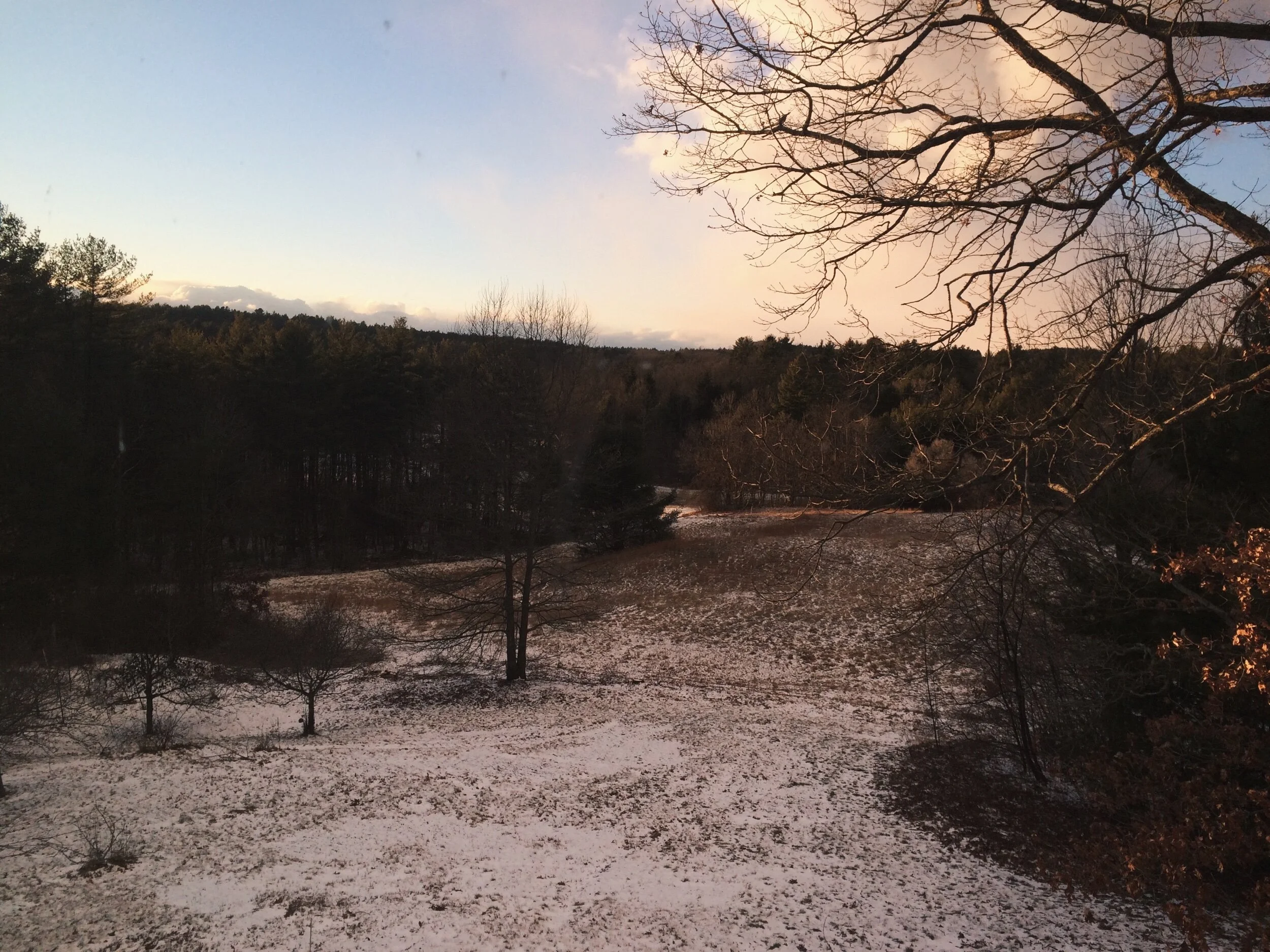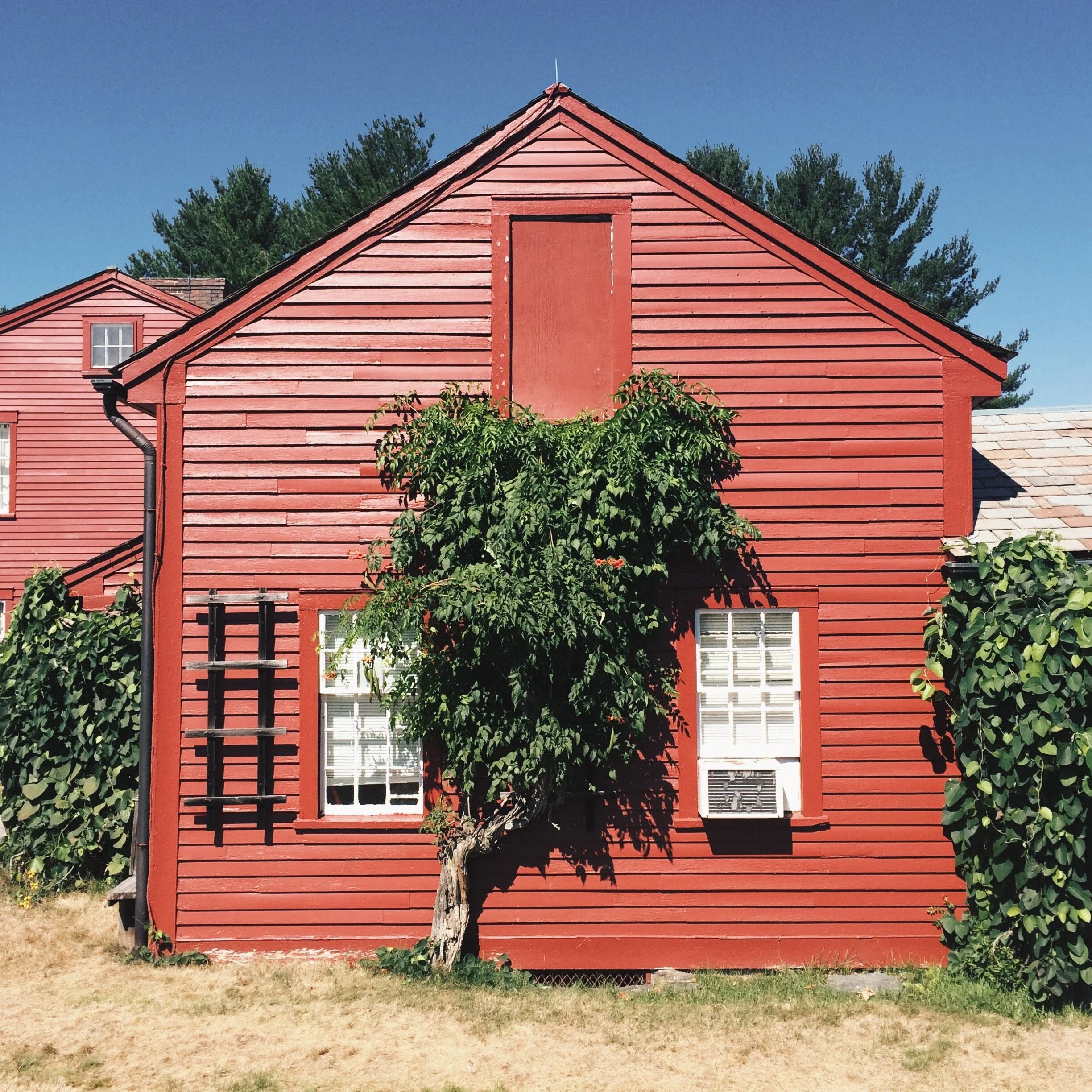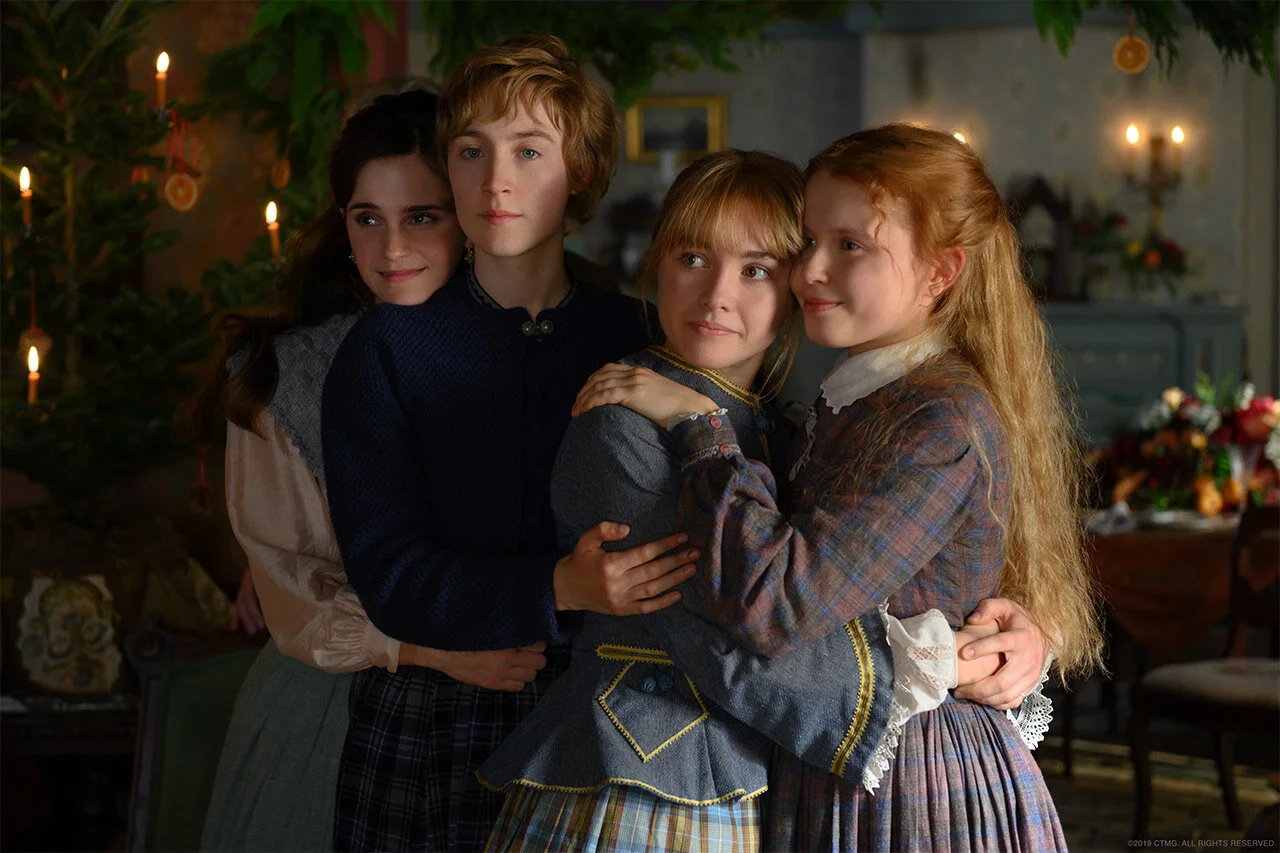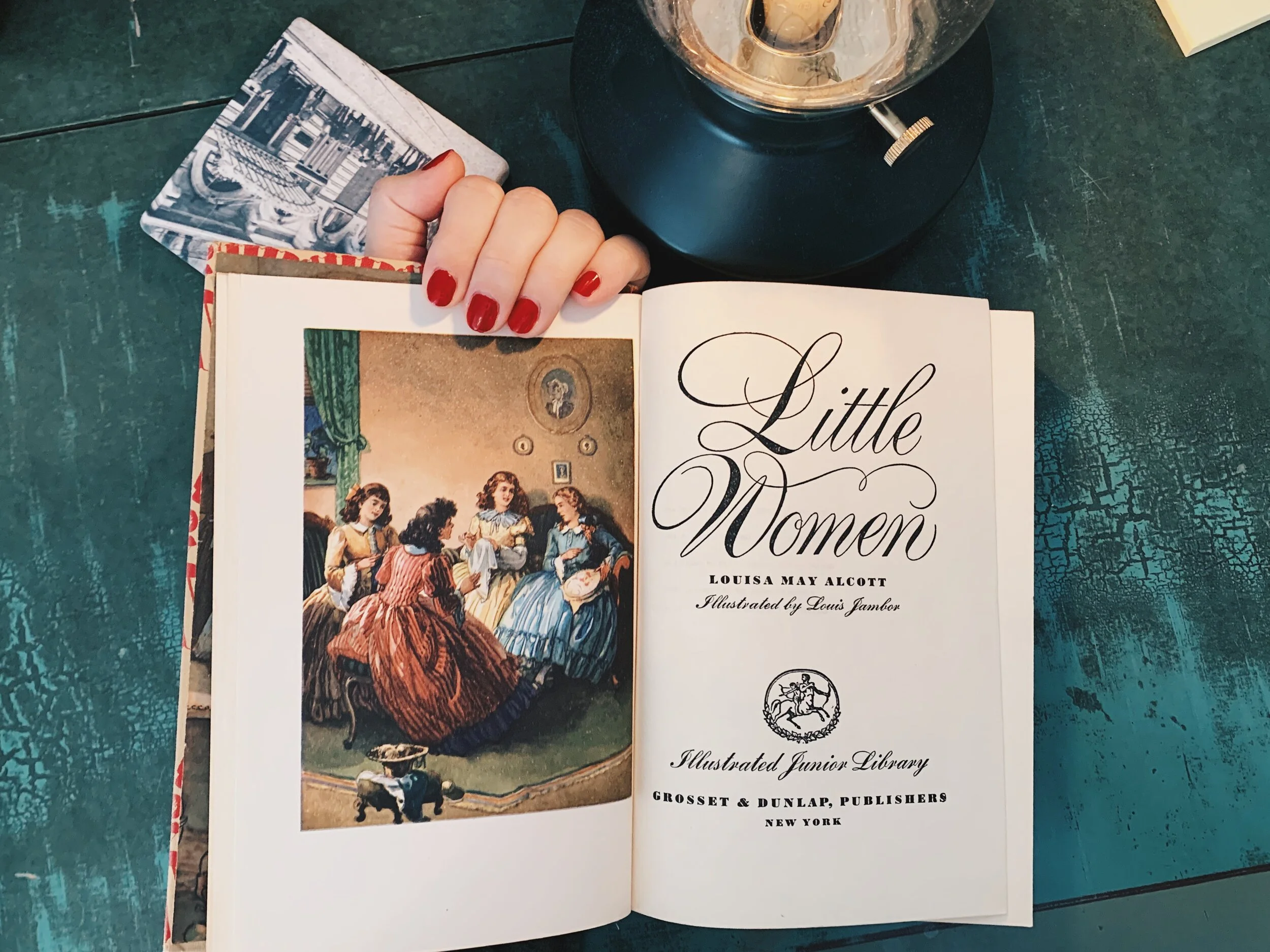Little Nightingales: Female Filmmaking in 2020
Photo by Zoë G. Burnett.
“My question to Gerwig is… And?”
It’s 2020. We are in the age of female empowerment. Girls supporting girls, whatever your identification is. It’s a time that should be celebrated and perpetuated, earning what’s ours and helping others to do the same. No tearing down other women, no call outs. No judgment, no criticism, or at least being passive enough to say, “This just isn’t for me.” This was my stance until I accepted a friend’s invitation to see Greta Gerwig’s Little Women (2019). Until we can fairly assess the work of other women and hold each other accountable for missteps, flaws, or flagrant pandering, we will not succeed in creating effective films that demand respect outside of gross profit. We can do better.
The past decade saw the rise and fall of the exhibitionist performance piece that was Lena Dunham’s Girls (2012 - 2017). Later, Gerwig took up the banner of being the voice for “not-like-other-girls” everywhere with her semi-autobiographical film Lady Bird (2017). Starring Saiorse Ronan, it was effusively praised by viewers and critics alike. The next year, Ronan starred in stage and screen director Josie Rourke’s Mary Queen of Scots (2018). That’s a review for another day, suffice it to say that it’s one of only two movies in my life from which I’ve left a theater screening to use the bathroom. The other was Indiana Jones and the Kingdom of the Crystal Skull (2008).
Each of these projects has been praised as the new wave of female-made, feminist filmmaking, and through each I kept silent — publicly. With this in mind, I saw Little Women expecting yet another adaptation of a book that its own author described as “moral pap for the young.” What I didn’t expect was an exploitation both of the material and of the audience enthralled to this “positively radical” version of popular, distinctly “feminine” literature.
The Fruitlands Museum, photographed by Zoë G. Burnett.
It isn’t my intention to compare Gerwig’s adaption, which she wrote and directed, to the book or to any previous adaptations, nor is this review an attack on the sentimality many feel for Little Women. Despite the book’s being a prized and precious classic from my home state, I am not a devotee. Of all the big and small screen adaptations, I’ve seen four (1933, 1949, 1994, and 2019), which is two too many. Jessica Bennet’s New York Times review, quoted above, cites these as “a Rorschach test for how the world feels about women at the time.” Considering the movie’s Kool-aid sweet critical reception, this is a disheartening observation. If we can be unquestioningly sold yet another remake just because another woman has created it, then our expectations of feminist filmmaking need a drastic boost.
As a standalone work, Little Women is just not a good movie, and critics are being paid good money to tell us that it is. After the success of Lady Bird, a competent but otherwise bland film, Gerwig is aware of her rapt audience. In Little Women she takes a straightforward story and metafies it. Through inconsistent first person dictation and fractured linearity, the timeline becomes a clutter of cutaway scenes. The narrative is further confused as few of the performers seem to age and even fewer are provided with actual character development. If the plot hadn’t been chiseled into my brain from early girlhood, I sometimes would have had trouble knowing which part of the story I was watching. The costumes, which were themselves lacking in distinction and often accuracy, were little help. Amy is the exception, even though Florence Pugh looks nothing like a preteen.
The glaring offense of Gerwig’s version is that she’s not saying anything new, and what she is saying is either insultingly redundant or mumbled in a monotone. Yes, the characters are “ambitious, angry, and [have] agency.” Yes, Emma Watson gasps and whines her way through another contractually tailored Hermione performance. Yes, the otherwise marshmallow-like Marmee confesses her daily struggles to Jo, giving the immensely talented Laura Dern some of the spotlight in an otherwise wasted casting choice. Yes, the girls proclaim their flustered opinions about how women are treated in society in ways that directly correlate with our own, perpetually disappointing times. My question to Gerwig is… And?
To illustrate my fatigue with oversaturated, over-budgeted, and frankly overdone movies, I offer the career of another actress turned director and screenwriter, Jennifer Kent. Despite her cult success The Babadook (2014), which follows the struggles of a grieving mother whose son summons a terrifying monster, having gained traction since its release, it’s a mystery to me why Kent hasn’t received a margin of Gerwig’s acclaim. The film’s sharper points about societal expectations of women, especially when they become mothers, were overlooked because of its genre. Given the number of women who make up the target audience for horror, it’s surprising that film executives haven’t capitalized more on this percentage.
Kent’s next film, The Nightingale (2018), is set in a real life horror story: colonial Australia. Clare, an indentured servant and forced soloist to a British military officer. After she finally rebels against his normalized abuse, he has her family killed, to put it lightly. Set about forty years before Little Women, The Nightingale is an unfiltered representation of how women (especially lower-class women) were valued by Western society, transplanted to farther shores into which it also brutally forced itself. Out of all the period dramas and grindhouse revenge fantasies I’ve seen, this film is up there with the roughest. Although its merciless realism doesn’t necessarily elevate it above Little Women, what distinguishes The Nightingale is its commitment to direct action. There is no time for grandstanding about how Clare has been abused and how unfair it all is, only her stalwart forward motion in claiming justice for herself. To quote Scary Spice, “Now that is Girl Power.”
“To quote Scary Spice, “Now that is Girl Power.””
This brings me to my final grievance of Little Women: its usage of Louisa May Alcott. One of the most critically celebrated moments of the movie seems to be the ending, in which it’s revealed that we’ve been watching the story that Alcott is selling to her publisher. We’ve seen this “revelatory” device before, and most likely will again. As Gerwig is quoted in Bennet’s article, “As a child, my hero was Jo March… but as an adult, it’s Louisa May Alcott.” So why not make a film about the author, herself?
Fruitlands, photographed by Zoë G. Burnett.
Scratch the surface of this woman’s life, and you’ll find a story that may be far more familiar to young women today than cozy surroundings of home and hearth, supposedly poor but rich in the aesthetic of genteel poverty. Financially sunk by their father’s Transcendentalist farming experiment Fruitlands, where part of Little Women is also filmed, Mrs. Alcott and each of the daughters worked to earn a living. Alcott’s writing career only picked up when her account as a Civil War nurse was published. After achieving literary success, Alcott bought a home in one of Boston’s most prestigious neighborhoods, a short distance from where the family had crowded into rented rooms while she worked as a maid. That is the success story I want to see on screen, not the umpteenth printing of a Jo March engraving in the prettiest, priciest edition that Hollywood can put out.
At the same time, we are doing better. Phoebe Waller-Bridge just swept the Emmys and the Golden Globes for Killing Eve (2018 - ) and Fleabag (2016 - ). My second screening of 2020, the adrenaline-pumping Uncut Gems (2019), was preceded by trailers for Killing Eve alumna Emerald Fennell’s upcoming film, A Promising Young Woman (2020) and short film writer and director Rose Glass’s first feature film, Saint Maud (2019). If theater executives believe that viewers drawn by the Safdie brothers’ hyper-masculine Sandler showcase might also be interested in damaged, murderous, maybe even unlikeable, female leads, then someone up the ladder has noticed how this era’s little women and their interests have changed since 1868. Or they’re being made to listen, at last. Either way works.
Zoë G. Burnett is a writer, menswear stylist, and film enthusiast based in Boston, Massachusetts. A born and raised New England Yankee, she feels equally at home in the 7th arrondissement. She is currently editing her first novel. You can read her personal blog here.












In her first piece for The Attic on Eighth, Kara Thompson shares five period dramas to get you out of your winter blues and into springtime gladness.